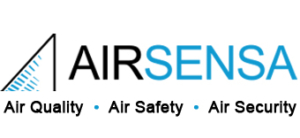The EG Tech Awards today announced the finalists in the 2020 edition of the awards, and AirSensa is delighted to be a finalist in the ‘Wellbeing Technology’ category.
The EG Tech Awards ‘champion the tech and real estate stars, innovators and adopters who are embracing digital transformation as the sector is propelled head first into a far more reactive, agile future.’
Our award nomination covered the combination of internal and external monitoring for real estate owners and occupiers, and the advantages of aggregating and validating all such data on our STORRM platform, and recognised the key customer benefits available from AirSensa’ solution:
- Helping protect share price against adverse events
- Supporting capital raising in a more ESG-focused environment
- Reducing liability to/for insurers
- Fostering a happier workforce and local community relations
For more information on AirSensa’s unique technologies and how the value they can bring to commercial customers, please email enquiries@airsensa.com
EG Tech Awards: https://www.egi.co.uk/tech-awards/
About AirSensa monitoring for commercial real estate
External monitoring: AirSensa builds a sensor network across and around a customer site(s) to monitor emissions in real time, to protect both the customer’s interests and their employees’ wellbeing.
Internal monitoring: AirSensa internal monitoring is installed throughout an organisation’s building(s), monitoring for key pollutants affecting employee health and productivity. Designed to meet WELL and RESET standards.
Outputs
- Online dashboards
- Analytics reports to formats agreed with the customer
- APIs to other systems (eg Building Management)
- Real-time text alerts to designated contact number(s)
- Raw data (CSV) for third party analytics
Benefits
- Augments a company’s ESG reporting with detailed and comprehensive scope one data;
- Ensures that unintentional polluting episodes are identified immediately for swift corrective
action; - Reassures employees that they are being protected;
- Inputs to operational process analysis to identify available efficiencies and reductions in overall emissions;
- Helps to protect against legal liabilities by properly protecting employees and local residents and providing continuous evidence of polluting emissions (or lack thereof).



